Mudbuck
gamer level 5
3830 xp
3830 xp
followers
10
10
Use my invite URL to register (this will give me kudos)
https://boardgaming.com/register/?invited_by=mudbuck
profile badges
...



recent achievements

I Got What I Wanted
Add a game to your Owned list that was previously in your Wish list.
Add a game to your Owned list that was previously in your Wish list.

I Walk the Talk!
Claim that you have played a game today by clicking the "Played Today!" button on a game page 100 times.
Claim that you have played a game today by clicking the "Played Today!" button on a game page 100 times.

Gamer - Level 5
Earn Gamer XP to level up!
Earn Gamer XP to level up!

Detective
Follow a total of 20 games
Follow a total of 20 games
Player Stats
Critic (lvl 1)
245 xp
245 xp
Explorer (lvl 2)
483 xp
483 xp
Professor (lvl 1)
183 xp
183 xp
Reporter (lvl 1)
155 xp
155 xp
About Me
Husband and father of 4 with broad tastes in games. // I particularly appreciate games with well-integrated themes, interlocking mechanisms which force strategic or tactical trade-offs, and quality production. // Playing a LOT of Star Realms these days - a LOT.


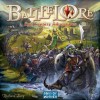





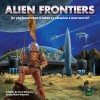





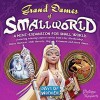
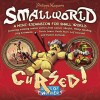

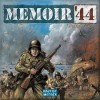

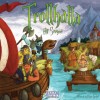

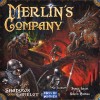








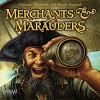

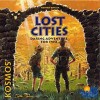




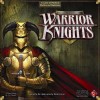

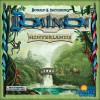











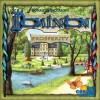

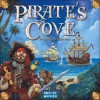


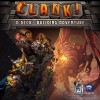









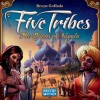



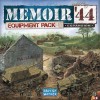

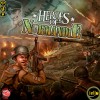






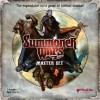


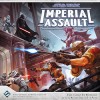
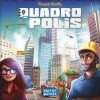




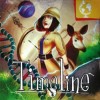




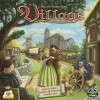













Tide of Iron
Tide of Iron entered the gaming world in 2007 as a hefty “coffin box” by Fantasy Flight Games. Within two years its family has grown to include a handful of expansions: Days of The Fox (set in WW2’s North African theater) and Normandy (recreating the conflicts of D-Day) as well as a volume of scenarios created by well-known wargame designers and a map-board expansion. (This review focuses on the base game except where otherwise noted.)
Fantasy Flight Games suggests that Tide of Iron focuses on “realistically simulating squad-level combat,” but is “streamlined enough to appeal to the casual gamer.” It is on this seldom-trodden ground between simulation and casual appeal where Tide of Iron finds its charm and its detractions.
PRODUCTION
Tide of Iron’s scenarios are played out on illustrated map-panels which render relatively realistic European terrain – forests, rivers, etc. These double-sided panels can be configured end-to-end or side-by-side in small or large numbers to create battlefields of many dimensions. Terrain overlays provide even greater flexibility. Photographs from WW2 are used to good effect on the game’s Strategy Cards evoking a somewhat “documentary” feel.
However, Tide of Iron’s true boast is its exquisite plastic miniatures of which there are many and a great variety, both infantry and vehicles. Infantry figures include regulars, elite troops, machine-gun units, mortar crews, and officers. Tanks, half-tracks, and transport trucks are the common vehicles. These finely-detailed models are closely rivaled by ingenious bases which hold 4 (or 3) infantry units. Unfortunately, inserting the figures’ pegs into the bases can prove to be fiddly and frustrating.
SYNOPSIS
Tide of Iron is a scenario-driven game in which each of the two players attempts to fulfill a given victory condition. That objective may be capturing and/or occupying a certain position (a hex-space) or exiting a number of designated units off the board or surviving for a given number of rounds, et al. Typically, a number of rounds is provided with an “immediate victory” condition included. Each scenario is historically based and provides each side with a pre-determined number of bases and list of figures.
One or more Operational Cards may also be in effect throughout the scenario: “Lay Smoke” will allow Engineer units to create smokescreens; “Fuel Shortages” will hamper vehicle-movement; “Heat Exhaustion” will slow squads down when moving, etc.
GAMEPLAY
1. Squad assembly. After choosing a scenario and arranging the map-panels per the instructions, each player strategically assembles his squads from the scenario’s available figures. Each base defines a “squad.” Squads and vehicles are “units.” A squad may include any combination of regular infantry, elite infantry, officers, MG or mortar crews.
Each troop-type has given capacities for firing accuracy and range and power. For example, elite troops will fire more accurately (i.e. with more dice) than regulars and will help a squad resist suppressive fire. Officers make a squad more mobile, machine gun figures have a greater range, mortar figures attack areas and don’t need to see their targets, etc. How a player assembles his squads is his first strategic step of the game.
Tide of Iron also accounts for specialized units: Medics, Engineers, Anti-tank, and Flamethrowers. Players will assign these specializations to their assembled squads per the scenario’s directions by placing the respective markers in the bases. Having formed their squads, players place their units on the map and begin play.
2. Rounds, Phases, Turns, Actions. A Round consists of 3 Phases:
A) The Action Phase consists of combat.
B) In the Command Phase opponents check for fulfilled victory-conditions, collect Command points, bid for initiative (who will move first next Round), and purchase Command Cards.
C) The Status Phase is basically clean-up and preparation for the next round.
The soul of the game is the Action Phase where players take alternating Turns performing Actions (typically 3) per Turn until all units are “fatigued” and can no longer be used that Round.
Players (and their units!) will perform Actions such as Advance (moving), Concentrated Fire, Moving & Firing, or Assault. A player may also activate a Strategy Card (see below) as an Action. One effective, tactical option is to place a unit in opportunity-fire (“op-fire”) mode which allows that player to fire upon enemy units during his opponent’s turn, in response to his movements. Each player continues to move and fire with every one of his units until he has exhausted them all for that Round.
3. Combat. As in many wargames, attacking means rolling dice. Probability is affected by both number of dice rolled (simulating a unit’s firepower and range) and percentage of success (simulating accuracy).
A choice between normal fire (which causes casualties) and suppressive fire (which can immobilize or rout units) adds tactical depth to combat, as does combining units’ attacks to maximize firepower-per-Action. Terrain features and line-of-sight also appropriately affect tactical decisions.
Combat is streamlined and largely intuitive and creates the feeling of squad-level fighting. Resolving attacks is straightforward, and the game-system usually rewards aggressive tactics. Though early plays require frequent referring to the troop-type statistics, familiarity eventually speeds up game time.
4. Strategy Cards. Most of Tide of Iron’s scenarios also provide each side with certain Strategy Card Decks. These Strategy Decks are historically appropriate to the scenario and to the forces involved. For example, the German player often has access to “Morale I” deck (simulating Germany’s battle-hardened soldiers). The American player may make use of the “American Reinforcements” deck (representing America’s numerical advantage at times). Other Strategy Decks include “Artillery Support,” “Ground Support,” and “Supply.”
The individual Strategy Cards from these decks are “purchased” and activated with Command points – a kind of currency awarded to each side as certain objectives are obtained in the scenario, e.g. one might capture a strategically located farmhouse and begin to earn 2 Command each Round. Some cards are greatly destructive. Some disrupt. Others provide more units. Strategy Cards certainly impact the game but do not overtake it. This design element elegantly brings to the game abstract qualities such as morale and leadership, and applies realities beyond the scope of the board – like artillery, air strikes, or reconnaissance.
5. Play continues until an immediate victory has been secured or the prescribed Rounds are completed.
THE EXPANSIONS (WHAT THEY ADD)
Days of The Fox
Summary
“The Fox,” of course refers to German General Erwin Rommel whose exploits earned him the nickname The Desert Fox. This expansion enables players to fight the fascinating campaigns of the North African theater of the war. Thus it provides new desert modular map-boards and all the necessary terrain.
Components/Gameplay
Most importantly Days of The Fox provides the British forces for the game: infantry figures, transport vehicles, armor (including the Bren Gun Carrier), bases, and tokens. It also adds and anti-tank weaponry for Germany (Flak 36), Britain (QF 6-Pounder), and even America (M1 57mm). German forces also gain two new types of tanks.
Recon, Alpha, and Bravo are new specializations joining the Engineer, Medic, Flamethrower, and Anti-tank specializations from the base game.
New Operations Cards apply desert combat-conditions in the North African theater, simulating conditions like fuel shortages or heat exhaustion. Likewise New Strategy Decks include “Desert Tactics” and “Disruption.”
Conclusion
The North African theater seems often underrated in wargames. Gladly, Days of The Fox boosts the Tide of Iron experience tremendously, and any Tide of Iron player should own it. The anti-tank weaponry is an especially valuable addition.
Normandy
Summary
The Normandy expansion focuses on the D-Day invasion of Normandy, France on June 6, 1944 and the fighting in France that followed. Some new map-boards from this expansion depict beach/cliff terrain for beach-landing scenarios as well as the infamous hedgerows. New terrain overlays and tokens abound representing beach obstacles, destroyed terrain, craters, swamps, graveyards, et al.
However, the artwork while illustrating the same European countryside is different from the base game. This artwork is slightly richer, but unfortunately causes an odd discontinuity if used in combination with the original map-boards. This “artistic re-direction” will certainly be benign to some and disruptive to others.
Components/Gameplay
All current armies get a boost in the Normandy expansion. The British get additional numbers (though no new unit types). The Americans are given M10 Tank Destroyers, and the Germans add four new types of tanks to their already staggering repertoire.
Demolition crews are a new and welcome specialization since buildings and bridges can now be targeted and destroyed with explosives. “Ruins” tokens are provided to simulate these effects.
There are new Operations Cards, among them “Scaling Cliffs,” “Naval Bombardments,” and “Beach Defenses.” New Strategy Decks mostly expand on those already available (e.g. “Artillery Deck II” is now added to “Artillery Deck I”). Further new gameplay elements are Weather Cards and Commanders.
Certain scenarios will now require weather checks at certain prescribed points in the battle resulting in fog, storms, and muddy conditions – any of which can affect players’ abilities to move and fight.
The new Commanders option represents the various qualities and styles of some of the war’s prominent generals and allows players to choose a battlefield commander (represented by cards). If players do so, they are allowed to replace any prescribed Strategy Deck with one of a variety of potent Leadership Decks. Commanders available include George S. Patton, Bernard L. Montgomery, and Walter Model.
Most importantly Normandy introduces campaign play to Tide of Iron – both rules and a series of scenarios following the engagements of the U.S. 29th Infantry Division. Though the rules for campaign play are beyond the scope of this review, they bring to Tide of Iron exponential variety and some of its greatest potential.
Conclusion
Though the new components add some bling, and the Weather Deck and Commanders options add some depth and increase replayability, it is the campaign play with its 29th Infantry scenarios that make the Normandy expansion shine. The campaign rules alone make it a must for any Tide of Iron player.
Designer Series, Volume 1
This Designer Series is a book of twenty-two scenarios created by well-known wargame designers and compiled by Dana Lombardy. Scenarios include skirmishes and large-scale confrontations, and the volume makes use of the Days of The Fox expansion. The contributors know their craft well, and the collection is full of background information. And for those who don’t excel at creating their own scenarios additional scenarios are always very welcome.
Map-Expansion #1
This “map-expansion” is actually a re-publishing of the original map-boards, re-illustrated in the newer artistic style introduced by the Normandy expansion. On the one hand, the publisher is offering players the opportunity to bring continuity between the base-game panels and Normandy panels. On the other, it is a subtle admission that the change in artwork is undesirable to many.
The newer artwork is richer. And Perhaps FFG was forced into the change. (For those who don’t care about the differences the map-expansion offers an opportunity to stage some very large battles.) However, in the end, Tide of Iron would have been better off retaining the same artwork as the base-game.
Fury of The Bear
Summary
With this most recent work, Tide of Iron developers deliver perhaps the most popular WW2 theater of operations: the Eastern Front. This addition to the family expands the game not only in scope but complexity.
Components/Gameplay
Fury of The Bear provides the Russian army, snow-covered map-boards, a few new terrain features (balkas, trenches) and strategy cards, and one new German AT unit – the PaK 40. Two new specialization tokens are included: Expert units and Saboteur units. All are predictable, solid, and welcome additions.
More noteworthy are more complex rules of play:
Munitions Specializations – players may now assign certain units High Explosive, Armor Piercing, or Smoke rounds.
Combined Strategy Decks – a strategy deck shared by both players, consisting of nation-specific cards and neutral cards, is designed to simulate uncertainty of support.
Subversion – the ability for players to eliminate opponents’ temporary resources.
Sabotage Cards – cards which are to be combined with the Saboteur units to hamper an opponents’ use of Strategy Cards.
Conclusion
Though an Eastern Front expansion is irresistible, I consider the additional rules overly complex for the improvements they bring. Fortunately, they are optional not required to implement and enjoy this latest installment.
STRENGTHS
Squad-assembly. The ability to strategically determine the composition of your squads (including the specializations) is a rare option and one of the most enjoyable aspects of the game.
Tactical blend. Tactical decisions are plenty but streamlined. It matters if a squad contains a machine-gun crew or an officer. It matters whether you’re commanding a Sherman or a Panzer IV. But there is no laborious reckoning of which direction your tank is facing or if your elite soldier is carrying a grenade or how intelligent your officer is or what brand of cigarettes the gunner is smoking.
It is on this point that Tide of Iron divides the world of wargamers. It will be far too technical for those who like light, card-driven wargames (e.g. Memoir ’44). It will prove far too simplistic for hard-core grognards who demand simulating detail (perhaps Advanced Squad Leader). Yet Tide of Iron hits a sweet spot between the two for many of us.
Strategy Cards. The Strategy Decks provide an excellent and innovative mechanic for off-board effects on combat. Their potential is endless.
Flexible system. Players who enjoy creating their own scenarios and using weaponry and vehicles not represented in Tide of Iron will find a game-system that readily accommodates additions and house-rules (when necessary).
WEAKNESSES
Clarity. Unfortunately Tide of Iron’s scenarios occasionally suffer from enigmatic instructions in their Objectives caused by awkward wording or redundancy. Consider “Picking Up The Pieces” from the Normandy expansion where, if the objectives are pursued as written, the scenario will be won by the British on the first move of the first turn.
Set-up time. Assembling squads, augmenting terrain, clarifying special rules…all add up for a lengthy set-up time. Even for experienced players set-up (from box to first move) can take up to 30 minutes. For newer players plan on 40-60 minutes which might (or might not) include a cursory explanation of the rules.
Peg-in-Base design. The squad-bases for Tide of Iron are at once both ingenious and befuddling. I applaud the unique design – especially the hook feature which holds the specialization tokens. But after many plays I question the peg-in-base feature which is fiddly at best, at worst exasperating. There are many suggested methods for altering the peg-holes or the pegs themselves to ease the process of inserting the figures. But at a $100, this much effort shouldn’t be necessary. Nevertheless, the fiddly bases are worth the trade-off for the experience the game offers.
Imbalanced scenarios?
Tide of Iron is frequently vilified for having imbalanced scenarios – that is, set-up favors one side over the other making it particularly difficult for one side to win. While this observation is largely accurate it is not necessarily a fault of the game itself. It is simply a trade-off of “balance” for historical simulation. Few of WW2’s conflicts involved two equally manned, equally equipped, equally commanded forces.
Along these lines two things should be noted. First, players whose tastes run to Euros and quasi-wargames should be careful not to unfairly exaggerate such “imbalances.” Second, the game’s designers would have done well to write the game’s first scenario as a balanced introductory scenario. The first scenario, “At The Breaking Point” is notoriously difficult for the German forces and probably anti-climactic for new players. Certainly this is why FFG held a contest for fan-designed introductory scenarios – a contest which produced a number of very good, small, balanced engagements.
In any case, with more experience players will find that the underdogs can win those seemingly imbalanced scenarios. Those victories are perhaps the sweetest.
CONCLUSION
Buy it. Play it. Tide of Iron is a spectacular game. It is all at once elegant, beautiful, heavily thematic, expandable, tense, and a satisfying gaming experience. I cannot but hope for many future expansions and campaigns.